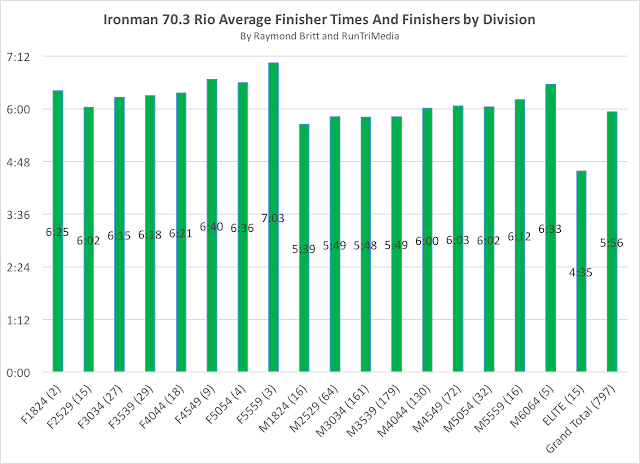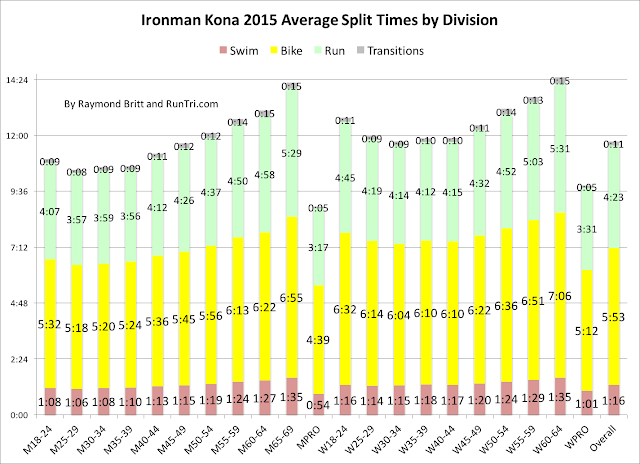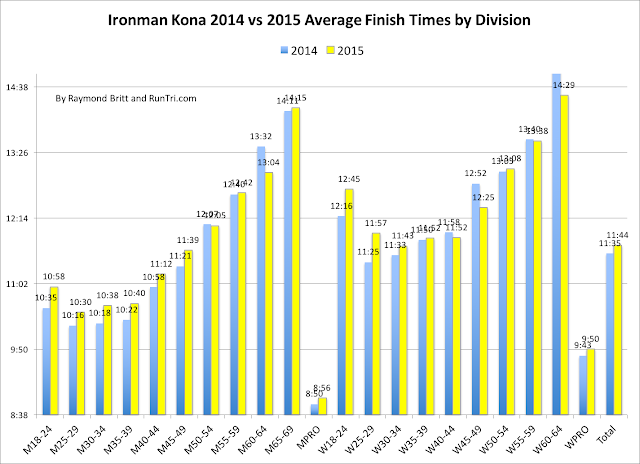By
Raymond Britt
 |
| Add caption |
The Wall Street Journal's Pulitzer Prize winning Kevin Helliker has written an excellent article, entitled '
At the Rio Olympics, Women Athletes Bump Against a Gold Ceiling'.
While putting the comprehensive article together, as he and others at WSJ reached out to me with a request to conduct analysis that confirmed the ultimate headline.
Seeing that many events in the Rio Olympics appeared to clearly differ by gender, such as womens' notably shorter cycling road course.

In present day endurance events in which both genders complete the same distance, Kevin wondered, do percent of women finish relatively close to men with higher rates/fewer DNFs.
We dove deep into our archives, and analyzed results by gender and division for Boston Marathon (1996-2016) and Ironman Triathlon World Championship (2000 to 2015).
Our striking conclusion: Women have hammered their way to match male finisher rates.
Women endurance athletes have battled year by year to prove mens' equal as measured by finisher rates with the gap sharply narrowing obviously on the historical and trending analysis.

Indeed, there is no reason for differences in event length or course type.
Here's an overview of our analytics findings the Journal relied on:
1. Big Picture 40 Year Evolution of Boston Marathon Finisher rates
-- 1970s: men 20% more likely to finish
-- 1980s: gap closing but still wide, 10% area
-- 2000s: gap slowly disappears
2. Boston Marathon 2016 DNF Rates (see chart, including rates by Division)
-- overall: 3.1%
-- Women 3.5%
-- Men: 2.8%
-- and by division, under 1% most often
3. Ironman Kona (see 3 charts: DNF Bike, DNF Run, Overall DNF)
-- Overall: 6.7%
-- Women: 6.0% excluding Women Pros
-- Men: 6.2% excluding men pros
For more details, see our comprehensive analyses of
-- Boston Marathon
-- Ironman Kona
-- 500+ analytic/stats Articles, posts, for more than 100

















